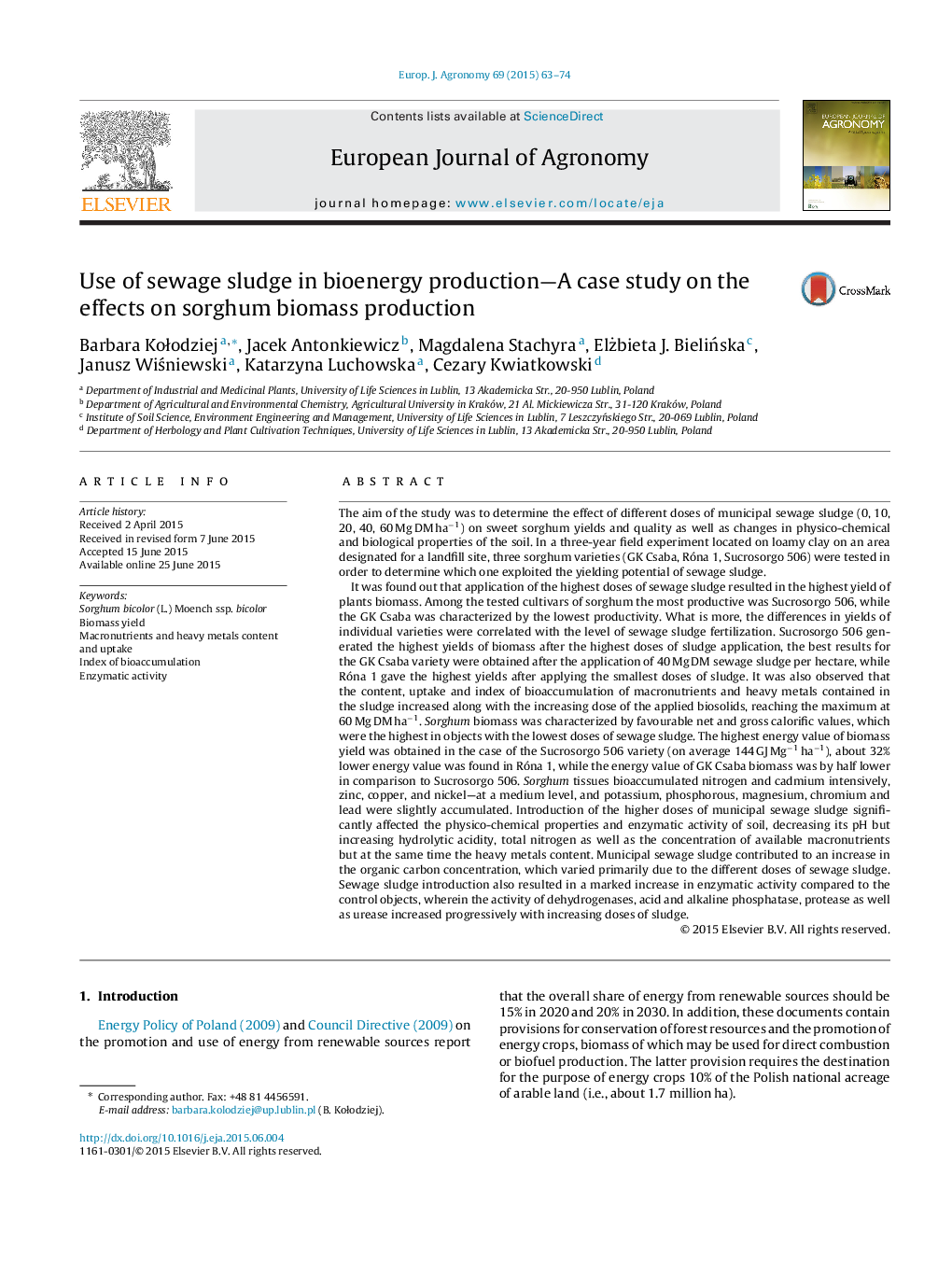| کد مقاله | کد نشریه | سال انتشار | مقاله انگلیسی | نسخه تمام متن |
|---|---|---|---|---|
| 4508824 | 1624456 | 2015 | 12 صفحه PDF | دانلود رایگان |
• Increasing doses of sewage sludge stimulated biomass production of sorghum.
• The highest yields were obtained after 40 and 60 Mg DM ha−1 of sludge.
• Sucrosorgo 506 variety highly exploited yielding potential of sewage sludge.
• Macro- and micronutrients concentration increased along with increase of sludge dose.
• Sludge cause changes in the physico-chemical and enzymatic properties of the soil.
The aim of the study was to determine the effect of different doses of municipal sewage sludge (0, 10, 20, 40, 60 Mg DM ha−1) on sweet sorghum yields and quality as well as changes in physico-chemical and biological properties of the soil. In a three-year field experiment located on loamy clay on an area designated for a landfill site, three sorghum varieties (GK Csaba, Róna 1, Sucrosorgo 506) were tested in order to determine which one exploited the yielding potential of sewage sludge.It was found out that application of the highest doses of sewage sludge resulted in the highest yield of plants biomass. Among the tested cultivars of sorghum the most productive was Sucrosorgo 506, while the GK Csaba was characterized by the lowest productivity. What is more, the differences in yields of individual varieties were correlated with the level of sewage sludge fertilization. Sucrosorgo 506 generated the highest yields of biomass after the highest doses of sludge application, the best results for the GK Csaba variety were obtained after the application of 40 Mg DM sewage sludge per hectare, while Róna 1 gave the highest yields after applying the smallest doses of sludge. It was also observed that the content, uptake and index of bioaccumulation of macronutrients and heavy metals contained in the sludge increased along with the increasing dose of the applied biosolids, reaching the maximum at 60 Mg DM ha−1. Sorghum biomass was characterized by favourable net and gross calorific values, which were the highest in objects with the lowest doses of sewage sludge. The highest energy value of biomass yield was obtained in the case of the Sucrosorgo 506 variety (on average 144 GJ Mg−1 ha−1), about 32% lower energy value was found in Róna 1, while the energy value of GK Csaba biomass was by half lower in comparison to Sucrosorgo 506. Sorghum tissues bioaccumulated nitrogen and cadmium intensively, zinc, copper, and nickel—at a medium level, and potassium, phosphorous, magnesium, chromium and lead were slightly accumulated. Introduction of the higher doses of municipal sewage sludge significantly affected the physico-chemical properties and enzymatic activity of soil, decreasing its pH but increasing hydrolytic acidity, total nitrogen as well as the concentration of available macronutrients but at the same time the heavy metals content. Municipal sewage sludge contributed to an increase in the organic carbon concentration, which varied primarily due to the different doses of sewage sludge. Sewage sludge introduction also resulted in a marked increase in enzymatic activity compared to the control objects, wherein the activity of dehydrogenases, acid and alkaline phosphatase, protease as well as urease increased progressively with increasing doses of sludge.
Figure optionsDownload as PowerPoint slide
Journal: European Journal of Agronomy - Volume 69, September 2015, Pages 63–74
